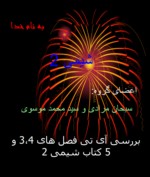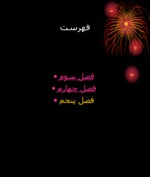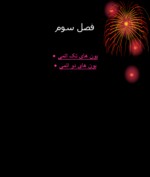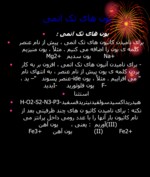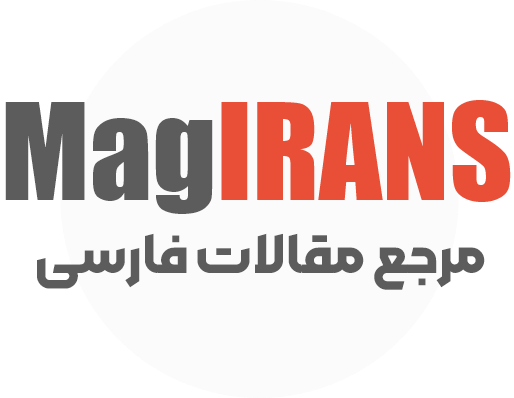بخشی از پاورپوینت
اسلاید 1 :
- یون های تک اتمی :
- برای نامیدن کاتیون های تک اتمی ، پیش از نام عنصر کلمه ی یون را اضافه می کنیم . مثلاً ، یون منیزیم Mg2+ یون سدیم Na+
- - برای نامیدن آنیون های تک اتمی ، افزون بر به کار بردن کلمه ی یون پیش از نام عنصر ، به انتهای نام عنصر پسوند " – ید ، -ide " می افزاییم . مثلاً ، یون یدید I- یون فلوئورید F-
- استثنا
- H-O2-S2-N3-P3-هیدریداکسیدسولفیدنیتریدفسفید
- نکته : برای نامیدن کاتیو ن های چند ظرفیتی بعد از نام کاتیون بار آنها را با عدد رومی داخل پرانتز می آوریم : یعنی ، یون آهن (III) Fe3+ یون آهن (II) Fe2+
اسلاید 2 :
- ترکیب های یونی دوتایی :
- برای نامیدن ترکیب های یونی ابتدا نام کاتیون و سپس نام آنیون را به دنبال هم می آوریم . بعنوان مثال ، ترکیب یونی حاصل از دو عنصر پتاسیم و کلر به فرمول KCl را پتاسیم کلرید می نامیم .
- برای نوشتن فرمول شیمیایی ترکیب های یونی نماد شیمیایی کاتیون و آنیون را کنار هم می نویسیم ، به طوریکه کاتیون در سمت چپ قرار گیرد . در فرمول شیمیایی بایستی بارهای مثبت در موازنه با بارهای منفی باشند .
- در فرمول شیمیایی بار کاتیون زیروند آنیون و بار آنیون بصورت قدر مطلق زیروند کاتیون انتخاب می شود .
- از نوشتن عدد یک و بارهای مساوی در زیروند پرهیز می شود .
- ترکیبات چند ظرفیتی مثل FeCl2 و FeCl3 به ترتیب آهن (II ) کلرید و آهن (III) کلرید نامیده می شوند .
- * - اگر کاتیون H+ باشد با یک آنیون تولید اسید می کنند برای نام گذلری ، ابتدا کلمه اسید و سپس کلمه هیدرو ، نام آنیون با پسوند " –یک " را ذکر می کنیم . مثال HCl اسیدهیدروکلریک ، HF اسید هیدروفلوئوریک
- یون های چنداتمی :
- 1- برای نامیدن این ترکیبات مانند ترکیبات دوتایی ، ابتدا نام کاتیون و بعد نام آنیون را می آوریم . مثال ، Na2SO4 را سدیم سولفات می نامیم .
- 2- برای نوشتن فرمول شیمیایی این ترکیب های یونی نماد شیمیایی کاتیون و آنیون را کنار هم می نویسیم ، به طوریکه کاتیون در سمت چپ قرار گیرد . در فرمول شیمیایی بایستی بارهای مثبت در موازنه با بارهای منفی باشند مثال ، می خواهیم فرمول شیمیایی ترکیب حاصل از یون های Al3+ و SO42- را بنویسیم. چون بار یون آلومینیم +3 و یون سولفات -2 است . پس دویون آلومینیم به سه یون سولفات کنار هم قرار می گیرند. Al2(SO4)3
اسلاید 3 :
- Flame Test Lab
- Post-lab Questions Answer using complete sentences unless the question is purely mathematical. Use a separate piece of paper to answer these questions. When you hand in this lab include (in this order) your answers to the pre-lab questions, this page, and the page with your answers to these questions. Typing your answers won’t get you extra credit but it will earn my gratitude! By the way, some helpful information can be found on the back of this page. Use this information, and your book and your lab results to answer the questions.
1) Why do different metals have different characteristic flame test colors?
2) What is the purpose of a spectroscope?
3) Before we began each flame test we cleaned the wire loops with concentrated acid several times. Why is it essential that the wire loop be clean?
4) If you test two samples and find that both produce a red flame, how can you determine for sure whether they contain the same metal?
5) Most salts contain a metal and a non-metal. Look at the compounds we tested and determine how we can be sure that it is the metal atoms that emit the photons and not the non-metal.
6) Could flame tests be useful in determining identities of metals in a mixture? If so, what problems might arise? If not, why not?
7) What particles are found in the chemicals that may be responsible for the production of colored light?
8) What color did your unknown produce in the flame? What is your unknown?
9) Why do you think the chemicals have to be heated in the flame before the colored light is emitted?
10) When the spectrometer was used to view the flame, explain why different colorful emission lines were observed for the elements.
اسلاید 4 :
- Background Information
- By placing atoms of a metal into a flame, electrons can be induced to absorb energy and jump to an excited energy state: a quantum jump. They then return to their ground state by emitting a photon of light (the law of conservation of energy indicates that the photon emitted will contain the same amount of energy as that absorbed in the quantum jump). The amount of energy in the photon determines its color; red for the lowest energy visible light, increasing energy through the rainbow of orange, yellow, green, blue, indigo and finally violet for the highest energy visible light. Photons outside the visible spectrum may also be emitted, but we cannot see them.
The arrangement of electrons in an atom determines the size of the quantum jumps, and thus the energy and colors of the collection of photons emitted. This is known as an emission spectrum. In this way the emission spectrum serves as a ‘fingerprint’ of the element to which the atoms belong. We can view the emission spectrum of colors all at once with the naked eye. It will appear to be one color, which we must carefully describe. It is also possible to view the separate colors of the emission spectrum by using a spectroscope, which bends light of different energies differently. Low energy red light, is bent the most, and high energy violet the least. This allows us to see the various distinct colors of the emission spectrum of a sample.
In this lab we recorded the flame test color of several metals by capturing droplets of solutions of salts, or ionic compounds of those metals with a wire loop, then placed the loop into a bunsen burner flame. We attempted to use spectroscopes to view the separate colors of the emission spectra, but this is difficult to do under our lab conditions because the flame test is of short duration. Hopefully dimming the lab lights helped you to see the colors in the spectroscope.
Cobalt blue glass filters are often used when viewing mixtures of metals to screen out light that is yellow in color. The human eye sees yellow very well, since it is in the middle of the spectrum visible to the eye. Colors at the edges of the visible spectrum, especially violet, are more difficult to see. Cobalt glass absorbs light in the yellow wavelengths, but is transparent to light of higher energy (this is why it looks blue!). Viewing a yellow flame through cobalt glass will allow us to see if there is any higher energy light present.
Finally, we used the data we collect to identify a metal in an unknown salt solution. This process is the same as that used by chemical laboratories to identify the make-up of chemical contamination in chemical spills, land fills, industrial sites, etc. This must be done to determine the possible threat to human health and the ecosystem due to contamination.
This text is from http://www.kent.k12.wa.us/staff/cwattles/chemistry/flametestlab_inst.htm I have made some small changes to make it suitable for my purposes.
This table is for your reference:
در متن اصلی پاورپوینت به هم ریختگی وجود ندارد. برای مطالعه بیشتر پاورپوینت آن را خریداری کنید

